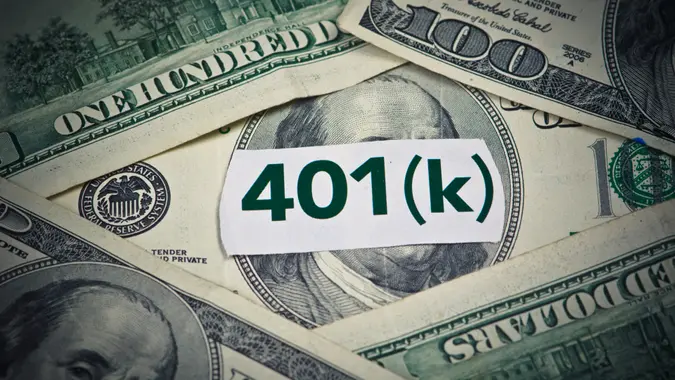22% of Singles Are ‘Scared’ to Retire Alone — How to Plan for a Solo Retirement

Commitment to Our Readers
GOBankingRates' editorial team is committed to bringing you unbiased reviews and information. We use data-driven methodologies to evaluate financial products and services - our reviews and ratings are not influenced by advertisers. You can read more about our editorial guidelines and our products and services review methodology.

20 Years
Helping You Live Richer

Reviewed
by Experts

Trusted by
Millions of Readers
A recent study conducted by Advisor Authority and powered by the Nationwide Retirement Institute found that 22% of single investors are “scared” of retiring alone.
Now, facing solo retirement, single investors need to be extra proactive to ensure they can retire comfortably, even without the help of a spouse’s or partner’s income.
These four strategies can help single investors plan for retirement.
Have a Bigger Emergency Cushion
Having a bigger emergency cushion set aside can help ease some of the stress that may come with solo retirement. Living on a fixed income can be a challenge, but having an emergency fund set aside can give you some breathing room if there are months with higher expenses.
Diversify Your Assets
According to the study, compared to 62% of partnered investors, 49% of single investors have a strategy to protect their assets against market fluctuations and risk are focusing on diversification of their assets. Those headed for solo retirement should focus on diversifying their assets and setting up “income streams that don’t depend on the market cooperating every year,” said Aaron Cirksena, founder and CEO of MDRN Capital.
Maximize Social Security
Social security benefits can start as early as 62 but drawing on social security before your full retirement age will result in a reduced monthly benefit. Cirksena cautioned that “if you’re single, the timing of Social Security matters even more because you don’t have a spousal benefit to lean on.”
As a result, maximizing your payout can go a long way towards additional security in retirement. He added that “if you can hold off past full retirement age, that extra 8% per year in delayed credits really adds up.”
Draw From Taxable Accounts First
Cirksena recommended withdrawing funds from taxable accounts first and moving to tax-deferred accounts later.
“It’s about managing taxes over decades, not just year-to-year,” he said.
Retiring Solo is Possible with the Right Plan
“When you’re planning solo, everything falls on your shoulders,” said Cirksena. This makes it even more important for “the plan to be dialed in.” Focusing on a solo retirement strategy that includes building a larger emergency cushion, diversifying investments and income streams, maximizing social security, and drawing from taxable accounts first can help ease the financial strain of solo retirement.
But regardless of what strategies you use, Cirksena recommended “structuring your plan so you don’t have to guess your way through retirement — it’s best to maintain flexibility, automate smart decisions, and be proactive, not reactive.”
More From GOBankingRates
- Nearly 1 in 3 Americans Hit by a Costly Holiday Scam, Norton Survey Shows -- How To Avoid This
- Here's What the Average Social Security Payment Will Be in Winter 2025
- How Middle-Class Earners Are Quietly Becoming Millionaires -- and How You Can, Too
- The Easiest Way to Score $250 for Things You Already Do
Sources:
- Nationwide, “Single in Retirement: Looking for Love and Financial Security“
- Aaron Cirksena, founder and CEO of MDRN Capital.
 Written by
Written by  Edited by
Edited by 

























